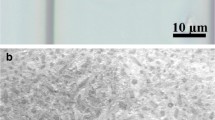Abstract
Axenic mass cultivation of Acanthamoeba castellanii in laboratory fermentors (14 l) yielded after 20 days approximately 3 g cells (wet weight). After a short lag phase amoebal cell numbers increased exponentially to a maximum of 3.5×105 cells per ml until cell death occurred after 20 days. Optical density and protein concentrations revealed identical patterns. During amoebal growth only 12–19% of the initially added glucose (100 mM) as sole carbon source was used. Large amounts of ammonia (1 g in 10.5 l culture volume) were excreted into the medium which subsequently raised the pH from 6.6 to 7.7, and from 6.6 to 6.8 in 2 and 20 mM buffered media, respectively. Growth inhibition and cell death could not be explained by a depletion of glucose or oxygen limitations during growth. The production of ammonia had a growth inhibitory effect, however, the sudden termination of the exponential growth phase and cell death could not be explained by the toxic influence of ammonia only.
Similar content being viewed by others
References
Adam KMG (1959) The growth of Acanthamoeba sp. in a chemically defined medium. J. Gen. Microbiol. 21: 519–529
Adam KMG (1964a) A comparative study of Hartmannelid amoebae. J. Protozool. 11: 423–430
Adam KMG (1964b) The amino acid requirements of Acanthamoeba sp. Neff. J. Protozool. 11: 98–100
Adam KMG & Blewett DA (1967) Carbohydrate utilization by the soil amoeba Hartmannella castellanii. J. Protozool. 14: 277–282
Andresen N (1956) Cytological investigations on the giant amoeba Chaos chaos. Compt. Rend. Lab. Carlsberg Ser. Chim. 29: 435–555
Baldock BM, Rogerson A & Berger J (1982) Further studies on respiratory rates of freshwater amoebae (Rhizopoda, Gymnamoebia). Microb. Ecol. 8: 55–60
Band RN (1959) Nutritional and related biological studies on the free-living soil amoeba, Hartmannella rhysodes. J. Gen. Microbiol. 21: 80–95
Byers TJ (1979) Growth, reproduction and differentiation in Acanthamoeba. Int. Rev. Cytol. 61: 283–338
Byers TJ, Akin RA, Maynard BJ, Lefken RA & Martin SM (1980) Rapid growth of Acanthamoeba in defined media; induction of encystment by glucose-acetate starvation. J. Protozool. 27: 216–219
Cailleau R (1933) Culture d' Acanthamoeba castellanii sur milieu peptoné. Action sur les glucides. Compt. Rend. Soc. Biol., Paris. 114: 474–476
Chagla AH & Griffiths AJ (1978) Synchronous cultures of Acanthamoeba castellanii and their use in the study of encystation. J. Gen. Microbiol. 108: 39–43
Chapman-Andresen C & Holter H (1964) Differential uptake of protein and glucose by pinocytosis in Amoeba proteus. Compt. Rend. Trav. Lab. Carlsberg 34: 211–226
Dolphin WD (1976) Effect of glucose on glycine requirement of Acanthamoeba castellanii. J. Protozool. 23: 455–457
Edwards SW & Lloyd D (1977) Changes in oxygen uptake rates, enzyme activities, cytochrome amounts and adenine nucleotide pool levels during growth of Acanthamoeba castellanii in batch cultures. J. Gen. Microbiol. 102; 135–144
Griffin JL (1960) An improved mass culture method for the large free-living amoebae. Exptl. Cell Res. 21: 170–178
Larsen J, Svensmark B & Nilsson JR (1988) Variation in the growth medium during the culture cycle of Tetrahymena: with special reference to ammonia (NH3), ammonium (NH +4 ), and pH. J. Protozool. 35: 541–546
Neff RJ (1957) Purification, axenic cultivation and description of a soil amoeba, Acanthamoeba sp. J. Protozool. 4: 176–182
Neff RJ, Neff RH & Taylor RE (1958) The nutrition and metabolism of a soil amoeba, Acanthamoeba sp. Physiol. Zool. 31: 73–91
Page FC (1988) A new key to freshwater and soil gymnamoebae. In: Culture Collection of Algae and Protozoa, Freshwater Biological Association. The Ferry House, Ambleside, Cumbria Pigon A (1970a) Hartmannella: culture growth and cell substratum contact. Exptl. Cell Res. 63: 443–447
Pigon A (1970b) Hartmannella: growth controlling substances in culture medium. Protoplasma 70: 405–414
Pigon A (1972) Inhibition of movement, attachment, and cytokinesis by autogenous substances in the amoeba Hartmannella. Exptl. Cell Res. 73: 170–176
Pigon A (1976) Cell surface and medium conditioning in Acanthamoeba cultures. Cytobiologie 13: 107–117
Pigon A (1978) Origin of medium exudate and its effect on cell surface in Acanthamoeba cultures. Cytobiologie 16: 259–267
Pigon A (1981) Growth-affecting activity of cellular microexudate of Acanthamoeba. Cytobios 32: 15–28
Prescott DM & James TW (1955) Culturing of Amoeba proteus on Tetrahymena. Exptl. Cell Res. 8: 256–258
Shukla OP, Kaul SM & Mehlotra RK (1989) Development of improved media for axenic cultivation of Acanthamoeba culbertsoni, Singh and Das 1970. Indian J. Exptl. Biol. 27: 785–791
Shukla OP, Kaul SM & Mehlotra RK (1990) Nutritional studies on Acanthamoeba culbertsoni and development of chemically defined medium. J. Protozool. 37: 237–242
Sinclair MJ, McClellan JF, Sinclair JL & Coleman DC (1981) Yield constant for Acanthamoeba polyphaga in batch and continuous culture. J. Protozool. 28: 479–483
Weekers PHH & Van der Drift C (1993) Nitrogen metabolizing enzyme activities in the free-living soil amoebae Acanthamoeba castellanii, Acanthamoeba polyphaga and Hartmannella vermiformis. J. Euk. Microbiol. 40: 251–254
Weekers PHH & Vogels GD (1994) Axenic cultivation of the free-living soil amoebae, Acanthamoeba castellanii and Hartmannella vermiformis in a chemostat. J. Microbiol. Methods 19: 13–18
Author information
Authors and Affiliations
Rights and permissions
About this article
Cite this article
Weekers, P.H.H., Wijen, J.P.H., Lomans, B.P. et al. Axenic mass cultivation of the free-living soil amoeba, Acanthamoeba castellanii in a laboratory fermentor. Antonie van Leeuwenhoek 69, 317–322 (1996). https://doi.org/10.1007/BF00399620
Received:
Accepted:
Issue Date:
DOI: https://doi.org/10.1007/BF00399620




